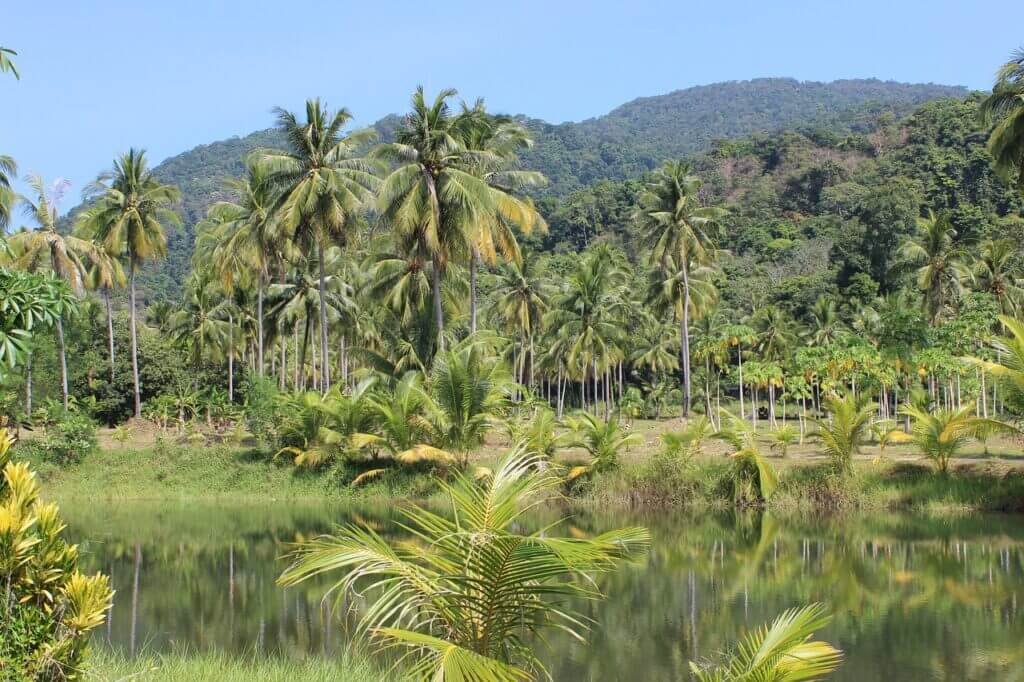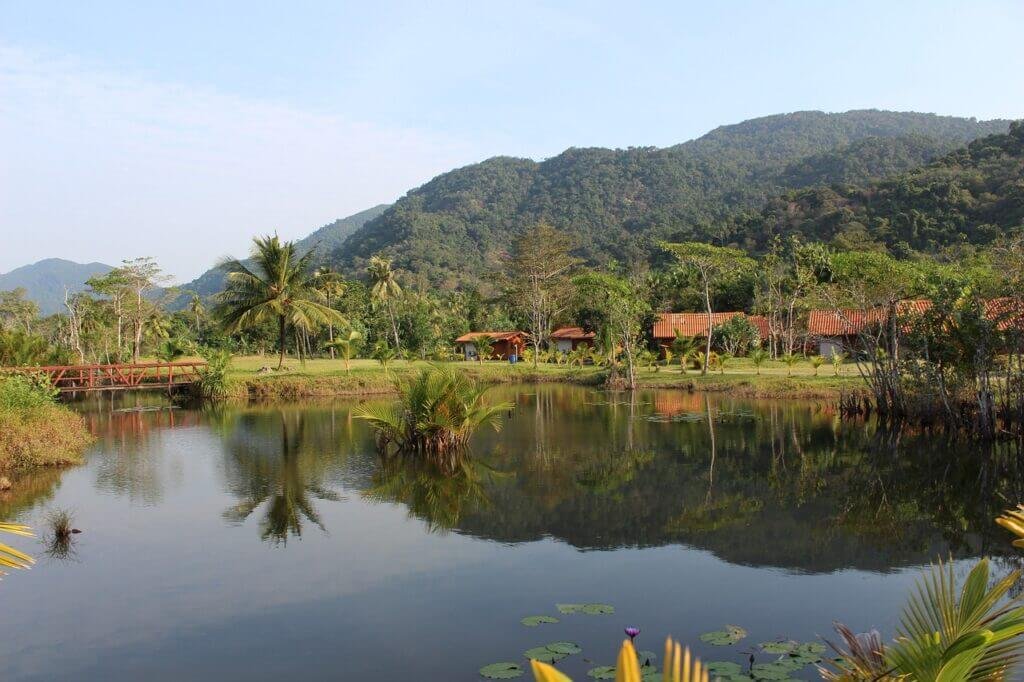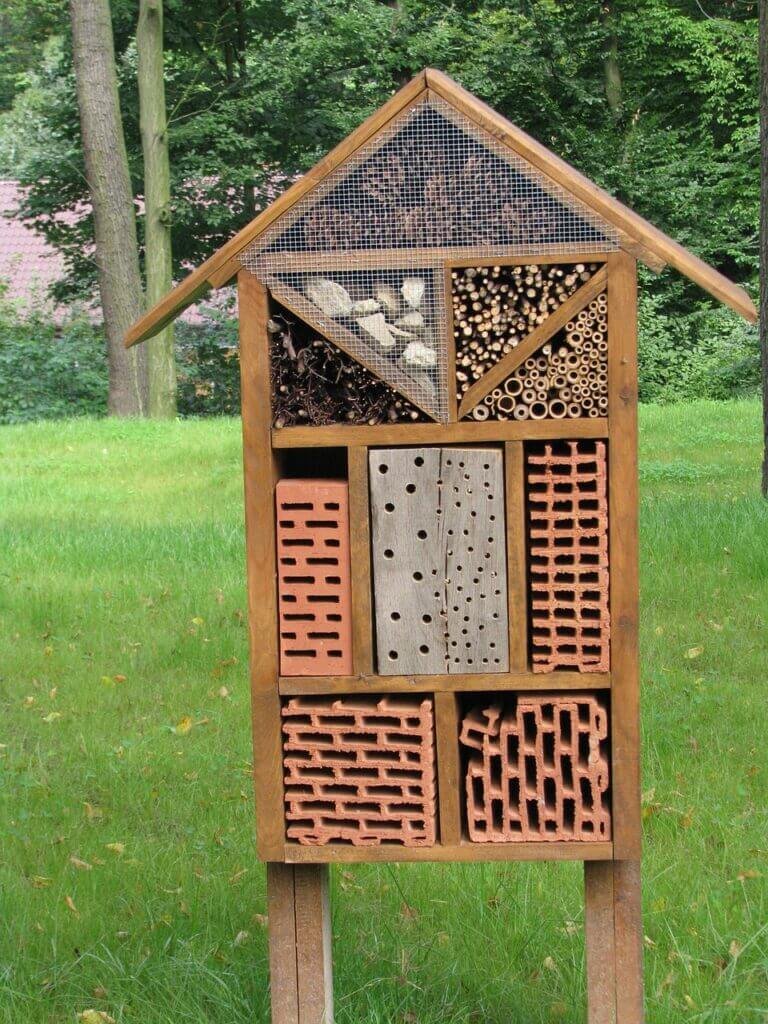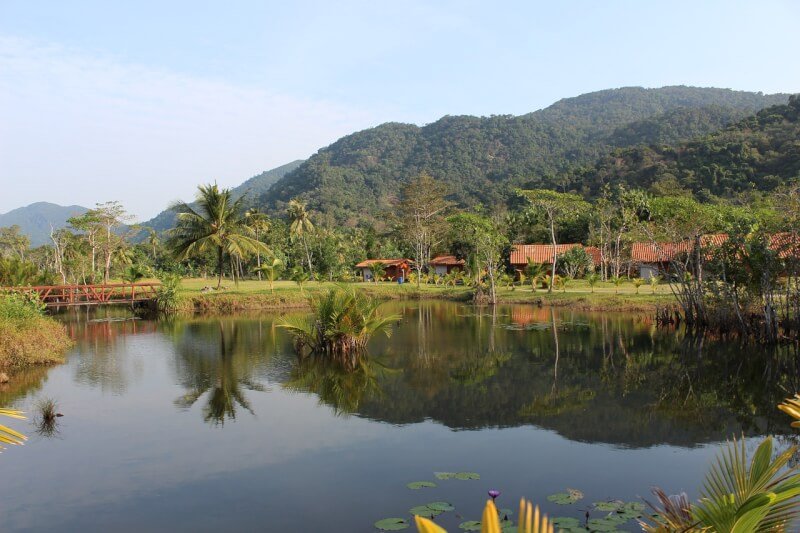Creating a wildlife-friendly garden in the midst of a bustling city may seem like a daunting task, but with a few simple steps, you can transform your outdoor space into a haven for birds, butterflies, and other fascinating creatures. From choosing the right native plants to providing sources of water and shelter, this article will guide you through the process of creating a green oasis that not only benefits the local ecosystem but also brings you closer to nature in the concrete jungle. So roll up your sleeves, grab your gardening gloves, and get ready to welcome an array of delightful wildlife into your urban oasis. Your garden is about to become a vibrant sanctuary where humans and nature can coexist harmoniously.

Choosing Native Plants
When it comes to creating a wildlife-friendly garden in the city, choosing native plants is a fantastic place to start. Native plants are those that naturally occur in your region and have adapted to the local climate and soil conditions. By incorporating native plants into your garden, you are providing a vital food source and habitat for local wildlife, including birds, butterflies, and bees.
Benefits of Native Plants
There are numerous benefits to choosing native plants for your wildlife garden. Firstly, native plants have co-evolved with the local wildlife, making them a perfect match for attracting and supporting various species. Native plants often provide nectar-rich flowers, which attract pollinators such as bees and butterflies, crucial for plant reproduction.
Furthermore, native plants often produce berries, seeds, or nuts, which provide a valuable food source for birds and small mammals. By selecting a variety of native plants that bloom at different times throughout the year, you can ensure a continuous supply of food for wildlife, enhancing your garden’s biodiversity.
Researching Native Plants
Before selecting native plants for your garden, it’s essential to do some research to identify the species that are native to your specific area. Local plant nurseries, botanical gardens, and online resources can provide valuable information about native plants suitable for your region.
Consider factors such as sunlight requirements, soil type, and water needs when choosing native plants. By selecting species that are well-suited to your garden’s conditions, you are more likely to create a thriving and sustainable habitat for wildlife.
Designing with Native Plants
Once you have identified the native plants that are a good fit for your garden, it’s time to start designing your wildlife-friendly space. Consider incorporating a variety of plants with different heights, textures, and colors to create visual interest.
Grouping plants with similar water and sunlight requirements together will make maintenance easier and ensure the plants thrive. Additionally, consider planting native grasses and groundcovers to provide shelter and nesting sites for small mammals and insects.
Remember to leave some open spaces for wildlife to utilize as feeding and resting areas. By carefully designing your garden with native plants, you can create a beautiful and inviting space that attracts a wide range of wildlife.
Providing Shelter
While food sources are essential for wildlife, providing shelter is equally important. Creating diverse habitats, planting trees and shrubs, and building nesting boxes are all effective ways to offer shelter to the creatures in your garden.
Creating Diverse Habitats
Creating a diverse range of habitats within your garden will attract a wide variety of wildlife. Include areas of long grass, boulders or rock piles, and a mix of densely planted and open spaces. This diversity will cater to different species and provide refuge for them in different weather conditions and seasons.
Planting Trees and Shrubs
Trees and shrubs play a critical role in providing shelter and nesting sites for many birds and mammals. Consider planting a mix of deciduous and evergreen trees to provide year-round shelter options. Native fruit-bearing trees, such as cherry or crabapple, offer additional food sources for wildlife.
Shrubs with thick foliage and dense branching patterns provide hiding places for small mammals and birds. Additionally, if you have enough space, consider planting hedges or creating windbreaks with native shrubs to provide protection from harsh weather conditions.
Building Nesting Boxes
Building or installing nesting boxes is a wonderful way to provide additional shelter for birds and small mammals. Different species require different types of boxes, so do some research to determine what is best for the wildlife in your area.
Place the nesting boxes in areas that are sheltered from strong winds and direct sunlight. By adding nesting boxes throughout your garden, you are creating inviting spaces for birds and mammals to raise their young and seek shelter during unfavorable weather.

Water Features for Wildlife
Water is a vital resource for wildlife, and incorporating water features into your garden can significantly increase its attractiveness to various species. Installing a pond, adding a birdbath, and creating a mini wetland are all great options to provide water for wildlife.
Installing a Pond
If space allows, installing a pond in your garden can be a game-changer for wildlife. Ponds provide a water source and a place for animals to drink, bathe, and even breed. Consider adding aquatic plants to the pond, like water lilies or water hyacinths, to create additional habitats for amphibians, insects, and other aquatic creatures.
Ensure that your pond has sloping sides or a shallow area to allow wildlife easy access to the water. You can also add natural features around the pond, such as rocks or logs, to create resting and basking spots for turtles and frogs.
Adding a Birdbath
If a pond is not feasible, adding a birdbath to your garden is a simpler alternative that still provides a vital water source. Birdbaths come in a variety of styles and sizes, so choose one that suits your garden’s aesthetic and accommodates different bird species.
Place the birdbath in a location that is easily visible to birds, but also near foliage or shrubs for quick cover if needed. Be sure to change the water regularly to prevent stagnation and attract more birds to your garden.
Creating a Mini Wetland
For smaller spaces, creating a mini wetland can be a creative and effective way to provide water for wildlife. Dig a shallow hole and line it with a pond liner or waterproof material. Fill it with a mix of water-tolerant native plants, such as cattails and irises, and some gravel for additional filtration.
A mini wetland not only offers a water source but also provides an excellent habitat for aquatic insects and amphibians. It can attract a variety of wildlife, such as dragonflies, frogs, and even small mammals.
Feeding the Wildlife
In addition to providing shelter and water, actively feeding the wildlife in your garden can help support their populations and create a vibrant ecosystem. Planting wildflower meadows, setting up bird feeders, and attracting butterflies with nectar plants are all effective ways to feed the wildlife.
Planting Wildflower Meadows
Planting a wildflower meadow adds both beauty and sustenance to your wildlife garden. Native wildflowers, such as Black-eyed Susans, Coneflowers, and Lupines, provide nectar for bees and butterflies, as well as seeds for birds.
Sow a mix of wildflower seeds in a sunny area of your garden, and allow the flowers to bloom and reseed naturally. Not only will you enjoy a stunning display of color, but you’ll also provide an abundant food source for pollinators and seed-eating birds.
Setting up Bird Feeders
Bird feeders are a classic way to attract and feed birds in your garden. Choose feeders that suit the types of birds you hope to attract and provide a mix of seed, suet, and nectar options.
Place the feeders in a quiet area, away from potential threats like stray cats, and ensure they are regularly cleaned and filled with fresh food. Maintaining a consistent food source throughout the year will encourage birds to visit your garden regularly and establish it as a reliable feeding spot.
Attracting Butterflies with Nectar Plants
Butterflies are not only beautiful to observe but also play a vital role in pollinating flowers. By planting nectar-rich flowers, you can attract butterflies and provide them with a much-needed food source.
Butterfly-friendly plants include lavender, butterfly bush, and milkweed. Create a designated area in your garden with these plants, and soon you will be treated to the sight of various butterfly species fluttering about.

Minimizing Chemical Use
To maintain a healthy and wildlife-friendly garden, it’s important to minimize the use of chemicals. Avoiding pesticides and herbicides, using organic fertilizers, and implementing natural pest control methods are all sustainable approaches.
Avoiding Pesticides and Herbicides
Chemical pesticides and herbicides can be detrimental to wildlife, killing not only pests but also beneficial insects and pollinators. Instead of relying on these toxic chemicals, consider using natural alternatives and integrated pest management techniques.
For example, attracting predatory insects like ladybugs or lacewings can help control pest populations naturally. Additionally, handpicking pests and removing weeds manually can be effective when done consistently.
Using Organic Fertilizers
Using organic fertilizers offers a safer and more environmentally friendly alternative to synthetic fertilizers. Organic options, such as compost or well-rotted manure, provide essential nutrients for plants without the risk of polluting waterways or harming wildlife.
Consider creating a compost bin in your garden to recycle organic waste and produce nutrient-rich compost. Not only will this help reduce waste, but it will also provide you with a free and sustainable fertilizer for your garden.
Natural Pest Control Methods
Implementing natural pest control methods can help maintain a balance between pests and beneficial insects in your garden. For example, attracting insect-eating birds by providing nesting boxes or birdbaths can help keep pest populations in check.
Additionally, companion planting, where certain plants are grown together to benefit one another, can deter pests. For instance, planting marigolds or garlic near susceptible plants can repel pests naturally.
Designing for Year-round Interest
A wildlife-friendly garden should be visually appealing and provide interest throughout the year. Choosing plants with seasonal variations, including evergreens, and utilizing berries and seedheads are effective ways to create year-round beauty.
Choosing Plants with Seasonal Variations
Selecting a mix of plants that bloom at different times of the year ensures that your garden remains vibrant and attractive to wildlife throughout the seasons. Consider plants like goldenrod or asters for late summer color, or witch hazel and winterberry for bursts of color during colder months.
By planning for year-round interest, you’ll provide a consistent food and nectar source for wildlife, ensuring their presence in your garden year-round.
Including Evergreens
Evergreen plants are a valuable addition to any wildlife garden as they provide cover and protection, even during the winter months. Their foliage offers shelter for birds and mammals, and some evergreens, like pine trees, produce cones that serve as a food source.
Include a variety of evergreen trees and shrubs in your garden, ensuring they are well-suited to your climate and planting conditions. This will create a visually appealing and functional habitat for wildlife all year long.
Utilizing Berries and Seedheads
Plants that produce berries and seedheads offer an important food source for wildlife, especially during the fall and winter months. Choose native plants like holly, winterberry, or elderberry, which produce berries that birds find irresistible.
Leave seedheads on certain plants, such as coneflowers or black-eyed Susans, throughout the winter. These seedheads not only add interest to your garden but also provide an additional food source for birds that rely on seeds during the colder months.
Encouraging Pollinators
Pollinators, such as bees and butterflies, are vital to the health and reproduction of many plant species. By providing an inviting environment for these important creatures, you can enhance the biodiversity of your garden.
Planting Pollinator-friendly Flowers
To attract and support pollinators, fill your garden with a variety of nectar-rich flowers. Native wildflowers, such as purple coneflowers, bee balm, or milkweed, are particularly attractive to pollinators.
Plant flowers in clusters to create a floral buffet for pollinators and provide a mix of colors and shapes to attract different species. By offering a diverse range of flowering plants, you’ll create a haven for bees, butterflies, and other pollinators.
Providing Bee Houses
Many species of bees are solitary and require suitable nesting sites to thrive. By providing bee houses, or bee hotels, you can attract these beneficial pollinators to your garden.
Bee houses consist of drilled holes or hollow tubes placed in a sheltered area. These provide nesting sites for different types of bees. Ensure the materials used are untreated and natural, such as bamboo or drilled wood. By offering suitable habitats, you’ll encourage a healthy bee population in your garden.
Creating Butterfly Puddles
Butterflies need more than nectar plants; they also require a water source. Creating a butterfly puddle is a simple and effective way to provide water for these delicate creatures.
Find a shallow dish or container and fill it with sand or fine gravel. Add water until it creates a moist, muddy surface. Butterflies are attracted to these puddles as they provide essential minerals and salts for their survival.
Managing Garden Waste
Proper management of garden waste is an important aspect of maintaining a wildlife-friendly garden. Composting, leaving leaf litter, and stacking dead wood can provide valuable resources for wildlife.
Composting
Composting is an excellent way to recycle organic waste from your garden, including prunings, leaves, and kitchen scraps. Compost piles or bins create a rich, nutrient-dense soil amendment that can be used to improve your garden’s health and fertility.
Compost piles also attract insects and other decomposers, providing a food source for other wildlife. Be sure to turn the compost regularly to speed up the decomposition process and avoid attracting unwanted pests.
Leaving Leaf Litter
While it may be tempting to tidy up and remove fallen leaves from your garden, leaving some leaf litter provides important habitat for wildlife. Many insects and small mammals use fallen leaves as a protective covering or nesting material.
Consider leaving a designated area or creating leaf piles in your garden where fallen leaves can accumulate and provide shelter for creatures like toads, salamanders, and ground-dwelling insects. Over time, the leaves will decompose and enrich the soil, benefiting your garden’s overall health.
Stacking Dead Wood
Stacking dead wood in your garden can create valuable habitats for wildlife. Dead wood, such as logs or branches, provides hiding places for insects, amphibians, and small mammals.
Place the dead wood in a quiet corner of your garden, ensuring there are small gaps and spaces for creatures to hide and nest. As the wood decomposes, it attracts moisture and becomes a haven for various organisms, contributing to the overall biodiversity of your garden.
Addressing Light Pollution
Light pollution not only affects human sleep patterns but also disrupts the natural behaviors of nocturnal animals. By addressing light pollution in your garden, you can create a more wildlife-friendly environment.
Choosing Dark-sky Friendly Lighting
When selecting lighting for your garden, choose dark-sky friendly options. These lighting fixtures direct the light downward, reducing light pollution and preventing unnecessary glare.
Opt for low-intensity LED bulbs with warm hues, as they are less disruptive to wildlife and provide a more natural lighting ambiance. By being mindful of the type and placement of your outdoor lighting, you can help minimize light pollution and create a more welcoming environment for nocturnal creatures.
Limiting Artificial Light at Night
To further reduce light pollution, it’s essential to limit artificial light at night. Consider installing timers or motion sensors on outdoor lights to ensure they are only active when needed.
Additionally, minimizing the use of decorative or unnecessary lighting can help reduce light pollution. Remember, a dark and quiet environment at night benefits nocturnal animals, allowing them to carry out their natural behaviors undisturbed.
Utilizing Motion Sensor Lights
Motion sensor lights can be a practical solution for illuminating your garden when needed while minimizing light pollution. These lights only activate when they detect movement, ensuring they are not constantly on and wasting energy.
By utilizing motion sensor lights strategically around your garden, you can limit unnecessary light pollution while still providing safety and security when you need it most.
Educating the Community
One of the most impactful ways to create a wildlife-friendly city is to share your knowledge and enthusiasm with the community. By organizing workshops and events, sharing information on social media, and engaging with local schools, you can inspire others to create their own wildlife-friendly gardens.
Organizing Workshops and Events
Organize workshops and events in your community to educate others about the benefits of creating wildlife-friendly gardens. You can host seminars on topics such as native plant selection, pollinator conservation, or permaculture gardening.
Consider partnering with local gardening clubs, nature centers, or environmental organizations to reach a wider audience and make a bigger impact. By sharing your knowledge and experiences, you can inspire others to make positive changes in their own gardens.
Sharing Knowledge through Social Media
In today’s digital age, social media platforms offer an excellent opportunity to share your wildlife-friendly gardening journey with a larger audience. Create social media accounts dedicated to your garden and regularly post updates, tips, and photos of the wildlife that visits.
Engage with like-minded individuals or organizations by joining online gardening forums or participating in relevant hashtags. Sharing your experiences and knowledge online can help inspire and connect with a broader community of wildlife enthusiasts.
Engaging with Local Schools
Engaging with local schools is an effective way to educate young minds about the importance of wildlife conservation and gardening. Offer to give presentations or host field trips to your garden, demonstrating the positive impact that wildlife-friendly practices can have on the environment.
You can also help schools establish their own wildlife gardens by sharing resources, providing guidance on plant selection, or even donating native plants. By involving the next generation in wildlife-friendly gardening, you are fostering a sense of responsibility and care for the natural world.
In conclusion, creating a wildlife-friendly garden in the city is not only beneficial for local wildlife but also a rewarding and enjoyable endeavor. By choosing native plants, providing shelter and water, and catering to specific needs of different species, you can transform your garden into a thriving oasis for wildlife.
Minimizing chemical use, designing for year-round interest, encouraging pollinators, managing garden waste, addressing light pollution, and educating the community are all essential components to maximize the impact of your wildlife-friendly garden. By following these guidelines, you can help create a sustainable and biodiverse urban environment that supports local wildlife populations. So grab your gardening gloves, embrace nature, and start creating a wildlife-friendly garden that will bring you joy and benefit the ecosystem for years to come.


